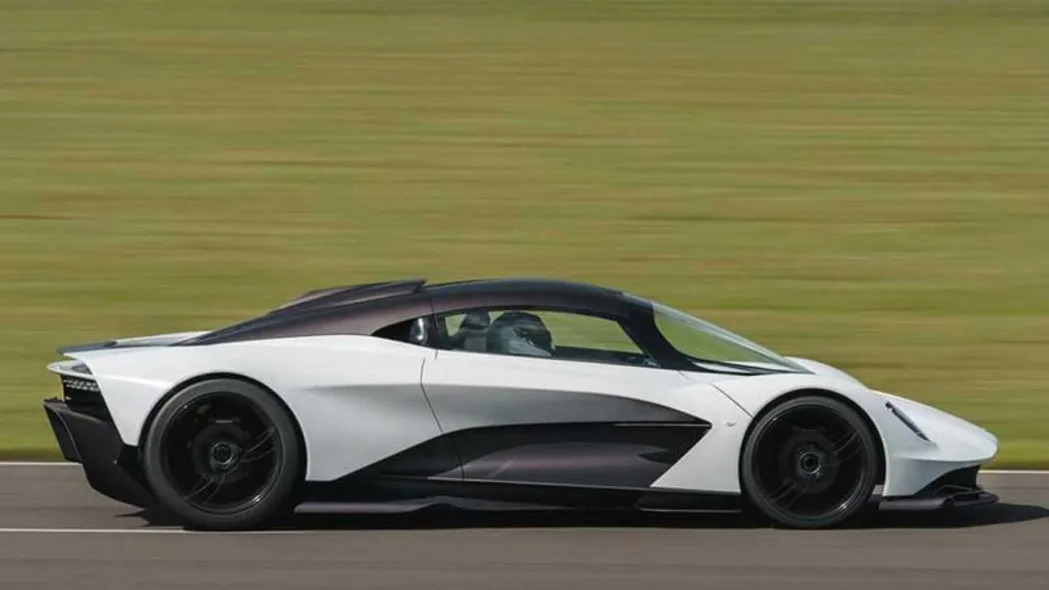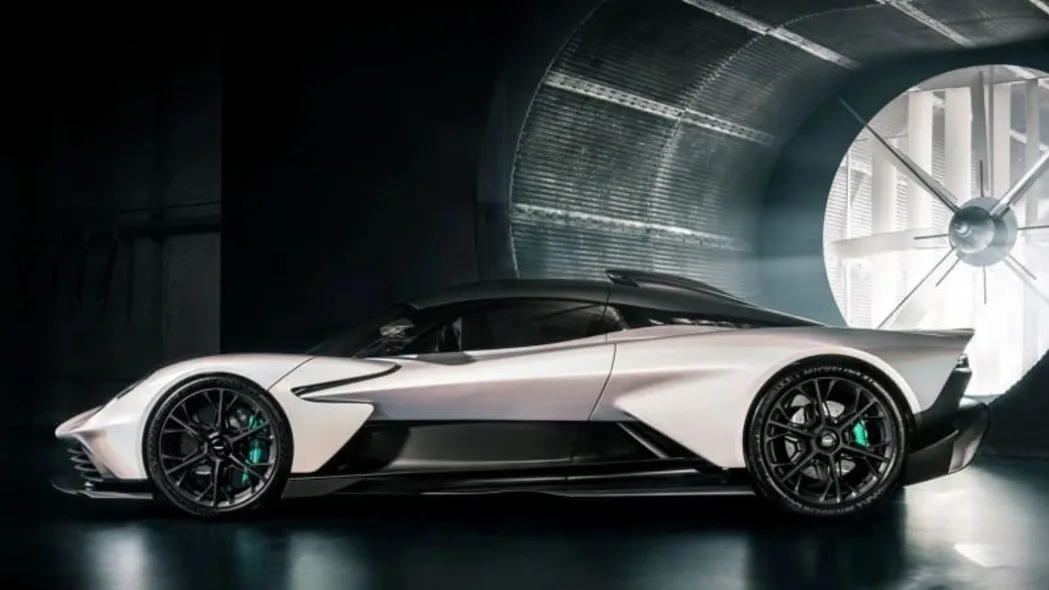Aston Martin has already launched the papa bear Valkyrie and canceled the baby bear Vanquish. The mama bear Valhalla is on its way, and as a recent test outing at the Silverstone track shows, she's been through quite a few nip-tucks since her introduction as the AM-RB 003 concept in 2019. Compared to the early concept (the white car below), the production model looks sharper and a touch meaner. The grille's been reworked above a tweaked lip spoiler, the matrix LED headlights take more family resemblance to Aston Martin's production cars, the formerly chiseled yet smooth sides have welcome even more cuts and angles along with a reshaped side intake, and there's a piece of plywood on stilts out back for a rear wing and air brake. Praise be, it looks like the top-exit exhaust has held on.


The powertrain's sourced from Aston Martin's technical partner Mercedes-AMG, the engine a revised version of the twin-turbo 4.0-liter V8 with the flat-plane crank that powered the AMG GT Black Series. Paired with three electric motors in a plug-in-hybrid arrangement — two on the front axle, one in the eight-speed dual-clutch transmission — combined output rises to about 998 horsepower, 740 of that from the engine. Every horse gets in on the action because the front-axle motors come with their own transmissions. To help counter the weight of all that metal and copper, engineers used the e-motors as the reverse gear, sparing a cog in the eight-speed transmission; engineers are aiming for a curb weight of no more than 3,417 pounds.
The specs on paper predict zero to 62 miles per hour happens in 2.5 seconds, a top speed of 217 mph, and a target Nürburgring lap time of 6:30. As with the Lamborghini Revuelto PHEV, you can't get all that electric performance and a fulsome electric range. On e-power alone, the Valhalla is projected to run about nine miles. The calculators also predict 1,332 pounds of downforce at 149 mph, well before terminal velocity, thanks to active aero like moving front and rear wings, and louvers by the rear wheels. Yes, the Aston Martin Cognizant F1 team, not known as Aston Martin Aramco, helped out with this part of the group project.
Performance bits include Multimatic spool valve dampers that work equally strong magic on road and track, set up pushrod style in front, multilink in back; an adjustable electronic limited-slip differential on the rear axle; staggered wheels that are 20 inches in front, 21 in back; and a brake-by-wire system clamping carbon ceramic rotors. The carmaker showed the interior at Pebble Beach in 2022, the rectangular steering wheel and F1-style legs-up seating position combined with dual-zone climate control, adaptive cruise control, Android Auto and Apple CarPlay, and ADAS perks such as forward collision warning, blind spot monitoring, autonomous emergency braking, and an optional surround-view camera.
The company plans to make 999 units starting next year, each representing a piece of Aston Martin history: this is the first mid-engined road car the automaker's ever made and its first plug-in hybrid. We imagine there aren't many left to buy, if any, with production scheduled for sometime next year.






Sign in to post
Please sign in to leave a comment.
Continue